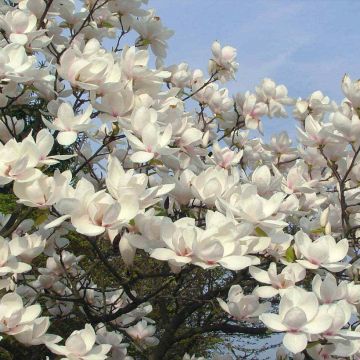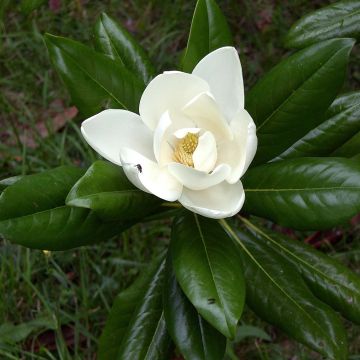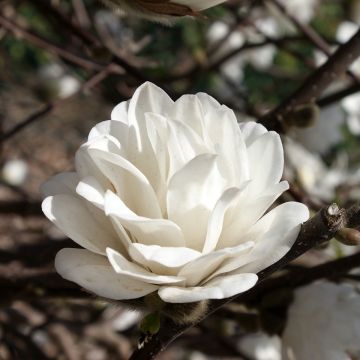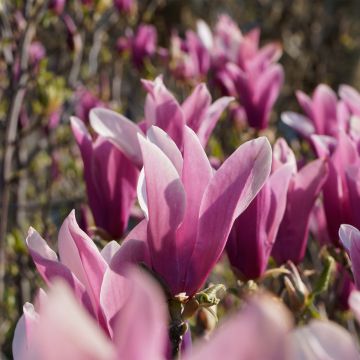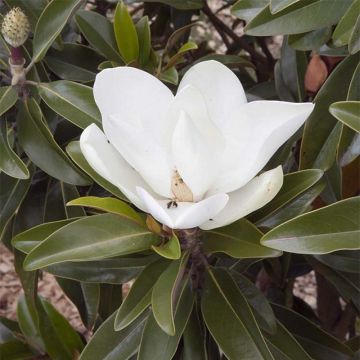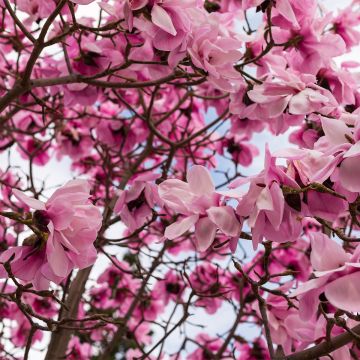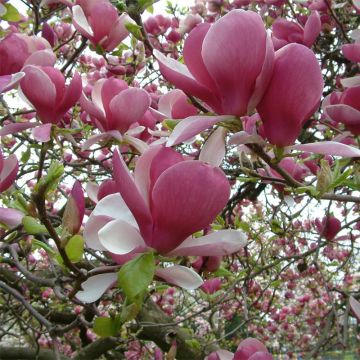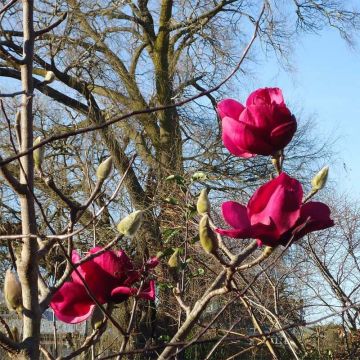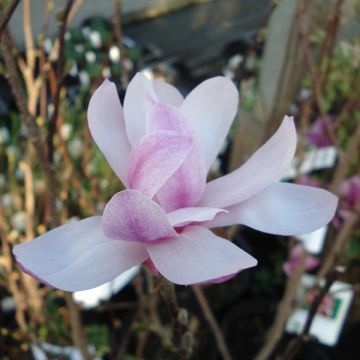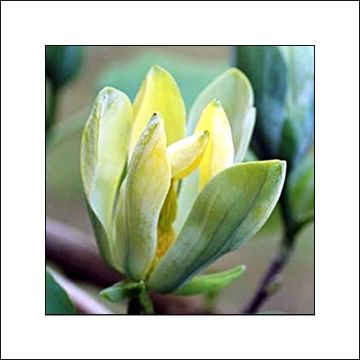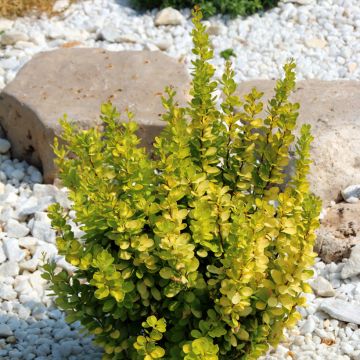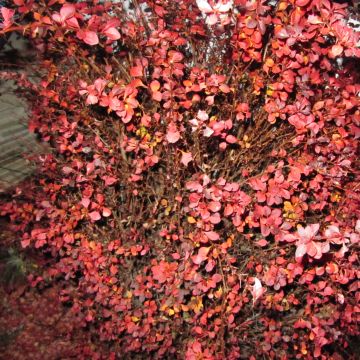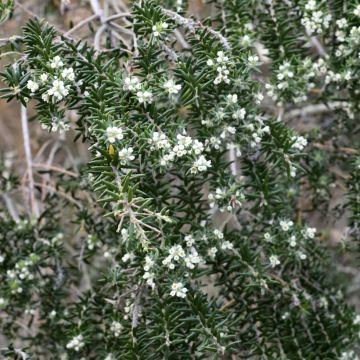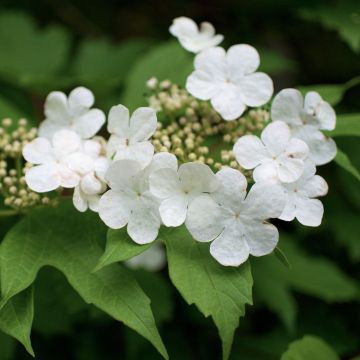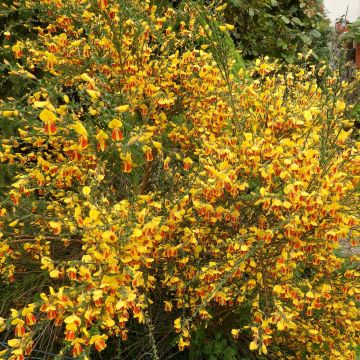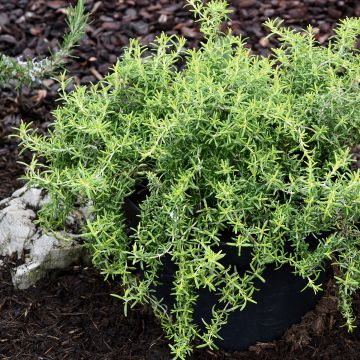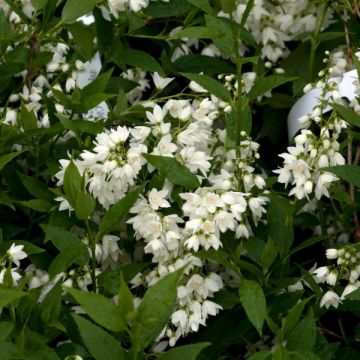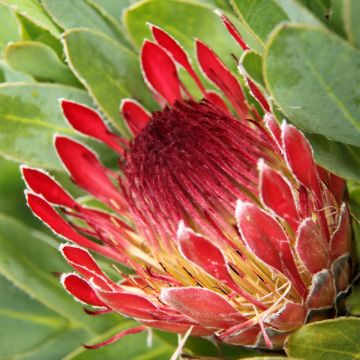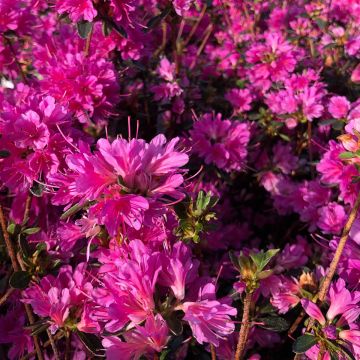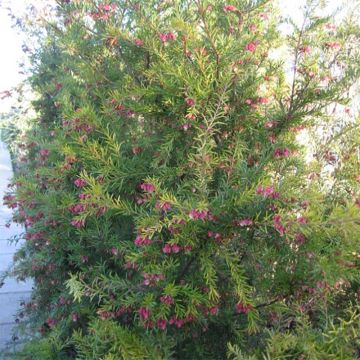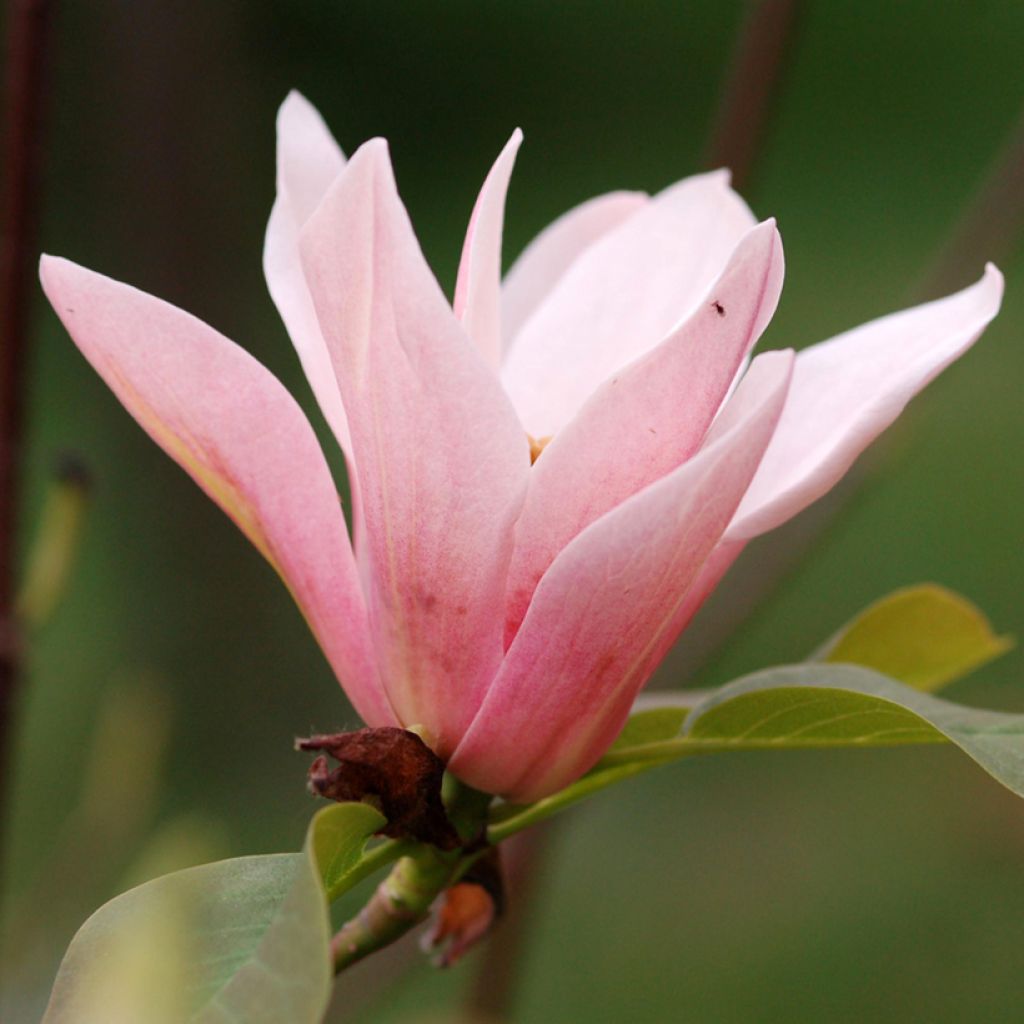

Magnolia x acuminata Blue Baby
Magnolia x acuminata Blue Baby
Magnolia x acuminata Coral Lake
Magnolia
This item cannot be shipped to the selected country
Delivery charge from €5.90
Delivery to Corse prohibited
More information
Schedule delivery date,
and select date in basket
This plant carries a 24 months recovery warranty
More information
We guarantee the quality of our plants for a full growing cycle, and will replace at our expense any plant that fails to recover under normal climatic and planting conditions.
From €5.90 for pickup delivery and €6.90 for home delivery
Express home delivery from €8.90.
Delivery to Corse prohibited: UE law prohibits the import of this plant from mainland France to Corse as part of the fight against Xylella fastidiosa. Please accept our sincere apologies.
More information
Does this plant fit my garden?
Set up your Plantfit profile →
Description
The Magnolia Blue Baby is a superb recent variety that stands out for its astonishing blue flower buds. This small tree, about 3 to 4 m (10 to 13 ft) tall, with an upright habit, surprises in spring with this uncommon color in the plant kingdom. Turning green before blooming into beautiful yellow flowers, these buds are a focal point in the garden. Hardy and tolerant of different soil types, this small Magnolia prefers acidic soils but can also tolerate some limestone. It simply needs a bit of moisture at the roots and a sunny to semi-shaded exposure.
Magnolias make up the most important genus in the Magnoliaceae family, which also includes the Liriodendron (Tulip Tree) and perhaps a few other genera, as botanists do not all agree on the classification of this family of archaic plants, easily recognizable by their flowers whose stamens and pistils are arranged spirally, rather than in concentric circles like in more evolved plants, and whose petals and sepals are morphologically undifferentiated, hence the term "tepals". The name Magnolia was given in 1703 by Charles Plumier, botanist of King Louis XIV, paying tribute to the physician-botanist Pierre Magnol (1638-1715), who was one of the directors of the Botanical Garden of Montpellier in the late 17th century.
From the crossbreeding between the vigorous North American Magnolia acuminata with yellow flowers, and the Chinese M. denudata with white flowers, a first variety was born, Blue Opal, with blue flower buds, hence its evocative name. Through cross-pollination of this variety, breeders then obtained Blue Baby, an improvement of the original variety with a more intense blue color.
Blue Baby forms a more compact small tree, reaching a height of 3 to 4 m (10 to 13 ft) and a width of about 2 meters. It is thus even better suited to small gardens, especially in urban areas. Its beautiful smooth green leaves, with an obovate shape, provide a perfect setting for the surprising blue flower buds. When they open, they turn to a yellow-green color before blooming into a beautiful pronounced yellow flower. This flowering in May-June is one of the highlights of spring. Great for planting in a flowerbed and also worth planting this small tree as a standalone specimen on a short grass meadow to be able to admire it and dazzle any visitors. To top it off, the flowering can also occur once again in autumn.
Hardy down to -20°C (1°F), or even lower, it is rather accommodating regarding soil pH, preferring acidic soils but still tolerating some limestone. However, it prefers fresh, well-drained soils and does not appreciate drought. Accepting full sun, this small tree can also grow in partial shade, especially in warmer areas.
This Magnolia Blue Baby is a true botanical curiosity. In a small-sized garden, it will be perfect as a standalone specimen on the short grass meadow, and in a more spacious area, it can also be integrated into a flowerbed with various plants. To have year-round blooms, plant Hamamelis alongside it, with their winter yellow, orange, or red flowers, which have a delicate spider-like grace with their elongated filaments resembling legs. With their flamboyant autumn colors, they perfectly complement the scene! For the height of summer, the essential Hydrangeas will delight you with their irresistibly charming flowers. Go off the beaten track and try the less-known Hydrangea aspera Macrophylla, which has a more natural, less cultivated appearance, and whose mauve flowering in July-August will take over from your Blue Baby's flowering.
Anecdote:
Magnolias are ancient trees, with fossils dating back over 20 million years. Their magnificent flowering is considered one of the most primitive: their flowers are evolutionarily close to the earliest existing flowers. The bark of magnolias has medicinal properties and is used in cosmetics, while their wood is considered precious.
Report an error about the product description
Plant habit
Flowering
Foliage
Botanical data
Magnolia
x acuminata
Coral Lake
Magnoliaceae
Magnolia
Cultivar or hybrid
Other Magnolia
Planting and care
The magnolia 'Blue Baby' prefers sheltered locations, sunny to partially shaded exposures, a moist, well-drained, rich, even slightly chalky, neutral or acidic soil. It is not picky about soil quality. However, it does not like overly dry soils, windy spots, or root competition, as its root system is shallow. As an adult, it is hardy, but it is advisable to protect young plants from severe frost during the first few years after planting. Note that late frosts and cold winds can damage flower buds and young leaves, affecting flowering.
Magnolia can be planted in spring or autumn, outside the freezing period, making sure to place it in a location sheltered from cold winds. Prepare a hole 80cm (32in) in diameter and depth, with a good amount of ericaceous compost and garden soil. Be gentle when placing it in the hole to avoid breaking the fleshy yet fragile roots. Water immediately with lime-free water (rainwater) to settle the soil around the roots.
During the first year after planting, Magnolia requires watering once a week. It will appreciate an annual mulch in spring. It is recommended to mulch around its base to keep the soil moist during hot seasons, enrich the soil, and protect it from winter cold. As its roots are fragile, transplanting should be avoided. The only enemies of Magnolia are pests such as scale insects, snails, and slugs, which can significantly attack young plants, as well as fungal diseases like root rot (in excessively wet soil), coral disease, and Pestalozzia. Note that magnolias are ornamental trees that tolerate atmospheric pollution well.
Planting period
Intended location
Care
This item has not been reviewed yet - be the first to leave a review about it.
Spring-flowering shrubs
Haven't found what you were looking for?
Hardiness is the lowest winter temperature a plant can endure without suffering serious damage or even dying. However, hardiness is affected by location (a sheltered area, such as a patio), protection (winter cover) and soil type (hardiness is improved by well-drained soil).

Photo Sharing Terms & Conditions
In order to encourage gardeners to interact and share their experiences, Promesse de fleurs offers various media enabling content to be uploaded onto its Site - in particular via the ‘Photo sharing’ module.
The User agrees to refrain from:
- Posting any content that is illegal, prejudicial, insulting, racist, inciteful to hatred, revisionist, contrary to public decency, that infringes on privacy or on the privacy rights of third parties, in particular the publicity rights of persons and goods, intellectual property rights, or the right to privacy.
- Submitting content on behalf of a third party;
- Impersonate the identity of a third party and/or publish any personal information about a third party;
In general, the User undertakes to refrain from any unethical behaviour.
All Content (in particular text, comments, files, images, photos, videos, creative works, etc.), which may be subject to property or intellectual property rights, image or other private rights, shall remain the property of the User, subject to the limited rights granted by the terms of the licence granted by Promesse de fleurs as stated below. Users are at liberty to publish or not to publish such Content on the Site, notably via the ‘Photo Sharing’ facility, and accept that this Content shall be made public and freely accessible, notably on the Internet.
Users further acknowledge, undertake to have ,and guarantee that they hold all necessary rights and permissions to publish such material on the Site, in particular with regard to the legislation in force pertaining to any privacy, property, intellectual property, image, or contractual rights, or rights of any other nature. By publishing such Content on the Site, Users acknowledge accepting full liability as publishers of the Content within the meaning of the law, and grant Promesse de fleurs, free of charge, an inclusive, worldwide licence for the said Content for the entire duration of its publication, including all reproduction, representation, up/downloading, displaying, performing, transmission, and storage rights.
Users also grant permission for their name to be linked to the Content and accept that this link may not always be made available.
By engaging in posting material, Users consent to their Content becoming automatically accessible on the Internet, in particular on other sites and/or blogs and/or web pages of the Promesse de fleurs site, including in particular social pages and the Promesse de fleurs catalogue.
Users may secure the removal of entrusted content free of charge by issuing a simple request via our contact form.
The flowering period indicated on our website applies to countries and regions located in USDA zone 8 (France, the United Kingdom, Ireland, the Netherlands, etc.)
It will vary according to where you live:
- In zones 9 to 10 (Italy, Spain, Greece, etc.), flowering will occur about 2 to 4 weeks earlier.
- In zones 6 to 7 (Germany, Poland, Slovenia, and lower mountainous regions), flowering will be delayed by 2 to 3 weeks.
- In zone 5 (Central Europe, Scandinavia), blooming will be delayed by 3 to 5 weeks.
In temperate climates, pruning of spring-flowering shrubs (forsythia, spireas, etc.) should be done just after flowering.
Pruning of summer-flowering shrubs (Indian Lilac, Perovskia, etc.) can be done in winter or spring.
In cold regions as well as with frost-sensitive plants, avoid pruning too early when severe frosts may still occur.
The planting period indicated on our website applies to countries and regions located in USDA zone 8 (France, United Kingdom, Ireland, Netherlands).
It will vary according to where you live:
- In Mediterranean zones (Marseille, Madrid, Milan, etc.), autumn and winter are the best planting periods.
- In continental zones (Strasbourg, Munich, Vienna, etc.), delay planting by 2 to 3 weeks in spring and bring it forward by 2 to 4 weeks in autumn.
- In mountainous regions (the Alps, Pyrenees, Carpathians, etc.), it is best to plant in late spring (May-June) or late summer (August-September).
The harvesting period indicated on our website applies to countries and regions in USDA zone 8 (France, England, Ireland, the Netherlands).
In colder areas (Scandinavia, Poland, Austria...) fruit and vegetable harvests are likely to be delayed by 3-4 weeks.
In warmer areas (Italy, Spain, Greece, etc.), harvesting will probably take place earlier, depending on weather conditions.
The sowing periods indicated on our website apply to countries and regions within USDA Zone 8 (France, UK, Ireland, Netherlands).
In colder areas (Scandinavia, Poland, Austria...), delay any outdoor sowing by 3-4 weeks, or sow under glass.
In warmer climes (Italy, Spain, Greece, etc.), bring outdoor sowing forward by a few weeks.

































